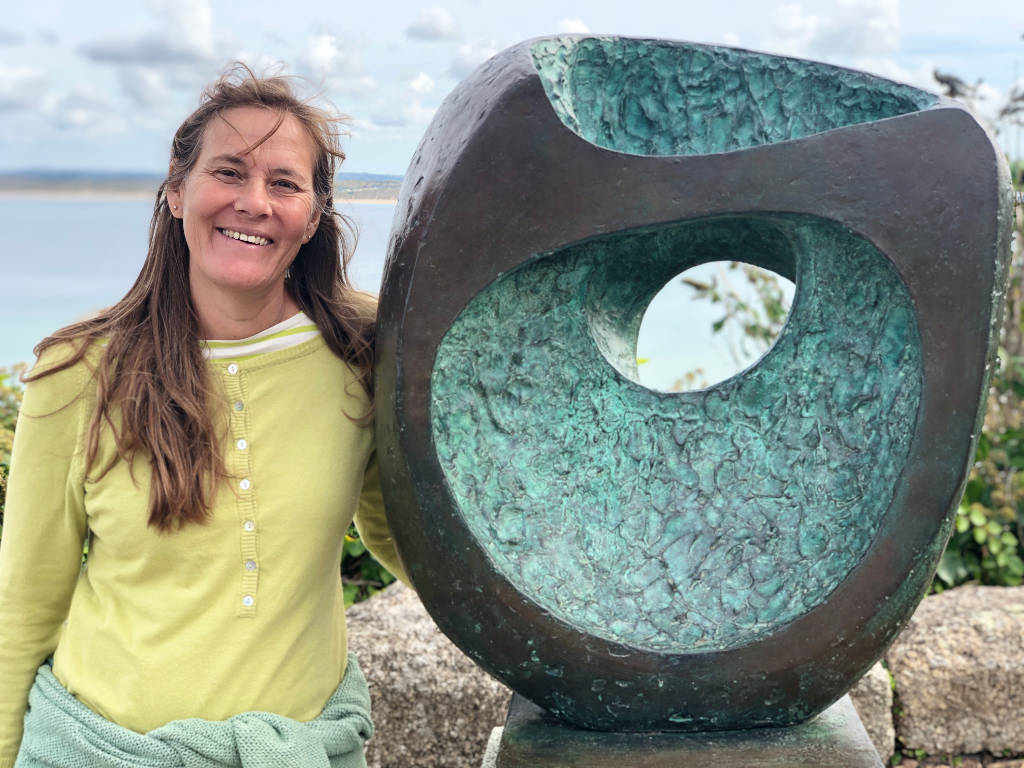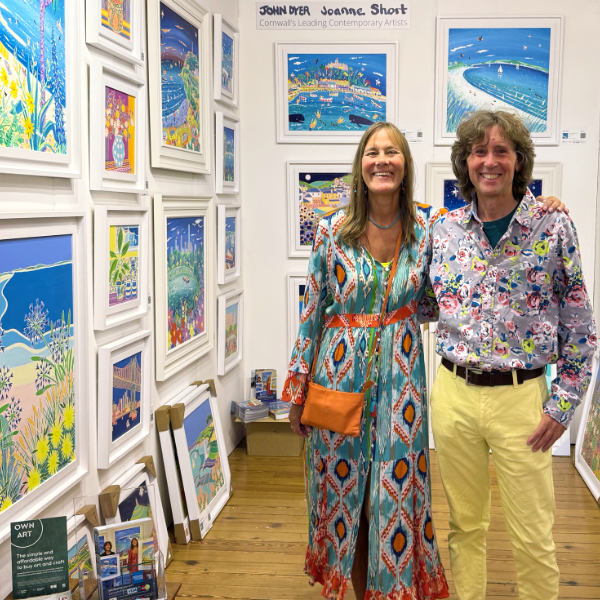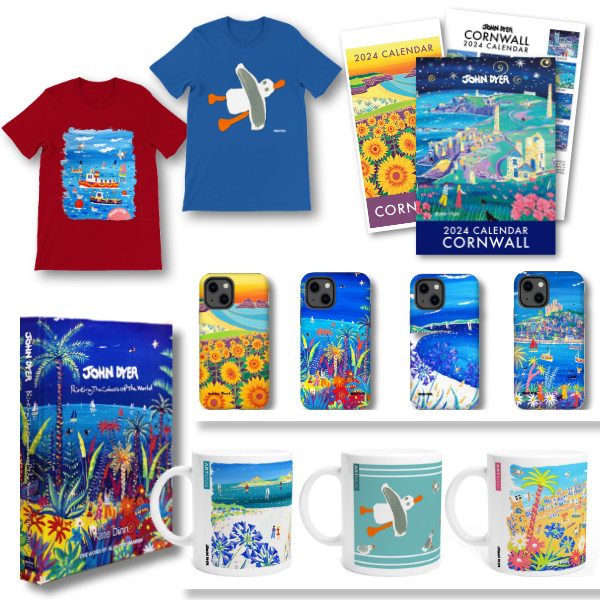Christmas Catalogue Exhibition Paintings Now Available | Private View December 6th in St Ives!
Christmas Catalogue Exhibition Paintings Now Available | Private View December 6th in St Ives!
Invest in British Art from Cornwall's Leading Artists | Free Worldwide Delivery
JOHN DYER
Original Paintings
New paintings available to buy online now by Cornwall's best loved artist.
JOANNE SHORT
Original Oil Paintings
New paintings available to buy online now by Cornwall's acclaimed colourist painter.
TED DYER
Original Oil Paintings
New paintings available to buy online by Cornwall's best known impressionist artist.
All Original Paintings
View all of the new original paintings that we have available to buy online now in our online gallery.
The ones you missed
View all of the recently sold original paintings by our Cornish artists John Dyer, Ted Dyer and Joanne Short.
Cornwall Art Prints
Museum-quality prints. Framed, Unframed, Signed & Wall Art Posters
Christmas Exhibition St Ives 2024
Private View: 6th December 6pm to 8pm
Exhibition continues: 7th - 8th
Summer Collection 2024
Online exhibition of new paintings by John Dyer & Joanne Short.
Easter Exhibition St Ives 2024
New paintings by John Dyer & Joanne Short in the historic Porthmeor Studios in St Ives.
Explore our Previous Exhibitions
Enjoy exploring our previous exhibitions and discover amazing paintings.
Art Collectors Club.
Enjoy 5% off your first order, regular offers, exclusive exhibition invitations and artist and gallery updates in our monthly email newsletter.
St Ives has been popular with artists since the late 19th century when a number of leading British and European artists came to the town to escape the formal confines of the art establishment. The unique light and wild landscapes of Cornwall proved to be an irresistible draw, and St Ives soon became known as an important centre for painting and sculpture. Today, the town continues to attract artists from all over the world, including famous contemporary Cornish artists John Dyer, Joanne Short and Ted Dyer who are drawn by its unique atmosphere and creative vibrancy.

One key factor is the quality of light. The town is located on Cornwall’s North coast on a peninsula almost surrounded by the sea. This makes it the perfect place to capture the ever-changing play of light on the sea and landscapes.
Another factor is the variety of landscapes within easy reach of the town. Within a few miles, you can find rugged cliffs, secluded coves, wind-swept moors and rolling farmland. This diversity provides ample inspiration for painters and sculptors alike.
Finally, St Ives has a long tradition of supporting creativity and the arts. The town was home to a number of influential artists in the early 20th century, including Barbara Hepworth, Patrick Heron and Ben Nicholson. These artists helped put St Ives on the map as a centre for modern art, and their legacy can still be seen today in the town's many galleries and studios.
St Ives has been popular with artists for over a century, thanks to its unique light, diverse landscapes and rich artistic heritage. If you're looking for inspiration, there's no better place to be than this idyllic Cornish seaside town.
Since the early 1800s, St Ives' unique light has been attracting painters. But in 1877, when the Great Western Railway made it easier to get to the town, even more artists were drawn to its shores.
In 1928 artists Ben Nicholson and Christopher Wood visited St Ives. There they met Alfred Wallis, a naive artist whose work left a deep impression on Nicholson and confirmed his own modern direction. When the Second World War broke out in 1939, Nicholson and his wife at the time, Barbara Hepworth (a fellow abstract artist), decided to move near St Ives. They were soon joined by another constructivist sculptor from Russia, Naum Gabo. After the war ended, St Ives became a hub for modern and abstract art thanks to leadership from Hepworth and Nicholson (Gabo left in 1946).
The St Ives School is a group of artists that were active in the 1950s, and it is particularly associated with Hepworth and Nicholson (until he left in 1958). In addition to their shared interest in abstraction, the St Ives artists were also inspired by landscapes-specifically West Cornwall. They extracted colours, shapes, and forms from these landscapes to use as sources for much of their artwork.
Karl Weschke, Bryan Wynter, Peter Lanyon, Patrick Heron, Paul Feiler, Robert Hilton, Peter Lanyon, Karl Weschke and Bernard Leach are all major figures at the St Ives School. Wilhelmina Barns-Graham was a prominent figurehead.
The St Ives School was most popular in the 1950s and 1960s, however, in 1993, a new gallery called Tate St Ives emerged. With its location on Porthmeor Beach and the newly exhibited collection of art from the school, it gave the town a newfound appreciation for arts and culture.

In short, it was a combination of factors: the outbreak of World War II and the influence of her husband Ben Nicholson. But it was also because St Ives offered Hepworth something that she couldn't find anywhere else: a close-knit community of like-minded artists with whom she could share ideas and inspiration. And it was here that Hepworth truly found her voice as an artist.

Did you know that there's a Museum and Sculpture Garden dedicated to the work of Barbara Hepworth n St Ives? If you're an art lover, then this is definitely a place you'll want to add to your list of must-see attractions in Cornwall. Here's a quick tour of what you can expect to see at the Barbara Hepworth Museum and Sculpture Garden.
The Barbara Hepworth Museum is housed in a former studio in St Ives which was once home to Hepworth herself. The studio has been carefully preserved and provides visitors with a fascinating insight into how the artist worked. You'll see evidence of Hepworth's signature carving techniques all around the studio, as well as some of her smaller sculptures and maquettes (scale models). There's also a small shop selling books, postcards, and other souvenirs.
Hepworth's larger sculptures are on display in the adjoining sculpture garden. Set against the backdrop of the stunning Cornish coastline, the garden provides visitors with a unique opportunity to experience Hepworth's monumental works in outdoor settings.

Whether you're an art lover or simply looking for somewhere scenic to spend an afternoon, Barbara Hepworth's Museum and Sculpture Garden are definitely worth a visit. With its fascinating insight into the artist's work and stunning setting overlooking Porthmeor Beach, it promises to be an enjoyable and memorable experience for all who visit.
The Tate St Ives is an art gallery located in the town of St Ives, Cornwall, England. The gallery houses one of the largest collections of modern and contemporary art in the UK. It is also one of the four Tate galleries, along with Tate Britain, Tate Liverpool, and Tate Modern.
So, why is there a Tate in St Ives? The answer lies in the town's rich artistic history. In the early 20th century, St Ives attracted a number of artists thanks to its natural beauty and unique light. Among these artists were some of the most important names in British art, including Ben Nicholson, and Barbara Hepworth.
In 1993, the Tate decided to open a gallery in the small fishing town of St Ives as a way to showcase the work of these artists and to put the town on the map as an important centre for art. The Tate St Ives has been incredibly successful; since its opening, it has attracted over two million visitors and has played a vital role in revitalizing the town's economy. The Tate St Ives does have its critics though with many of the most famous contemporary Cornish artists not having any current representation. The collection at the Tate has been backwards looking at Cornwall's art history rather than also embracing the wealth of contemporary artists living in St Ives and Cornwall who are responding to the Cornish coast, Cornish landscape and St Ives Bay. The Tate St Ives also imports art from the main Tate collection in London but this can feel like a 'colonial' presence in the town of St Ives and the county of Cornwall.
St Ives has been home to some of the world's most celebrated artists for over a century now. What makes the town so special? Many say it's the light; the unique quality of light that can be found in Cornwall is unlike anything else in the world and has inspired some truly iconic paintings. The landscape combined with the rive art history of the St Ives School put St Ives on the map and in the 1950s it was the centre of contemporary art globally.
The Newlyn School of Art was a British painting movement that focused on portraying rural scenes and everyday life in the fishing village of Newlyn, Cornwall. The school was active from 1895 to 1914 and produced some of the most iconic images of British life at the turn of the 20th century.
The Newlyn School was led by artists Stanhope Forbes and Frank Bramley, who were both fascinated by the local fishing community and its way of life. They were soon joined by other artists who shared their vision, including Walter Langley, Elizabeth Forbes, and Norman Garstin. Together, they created a body of work that depicted the hardworking people of Newlyn going about their everyday lives.
The paintings of the Newlyn School are characterized by their naturalistic style and focus on ordinary people. This was in contrast to the more idealized portrayals of rural life that were popular at the time. The school's use of light and colour also set it apart from other painting movements of the era.
St Ives sits on a peninsula and is surrounded by the sea a bit like an island. The sand has a high content of quartz so the beaches have a reflective effect on the light creating a mesmerising and unique feel even on dull or misty days. In the sunshine the colours, brilliance and clarity of the light and colours are exceptional and with the white quartz-rich sand extending beneath the sea, the colour of the water is a crystal clear azure blue.
It would be hard not to be inspired by St Ives. The colours, old fishing cottages, yellow lichen encrusted roofs, boats, seagulls and aqua blue sea and simply breathtaking and get the creative pulse racing. Younger artists are still attracted to the town and it is very much a hub of creativity in Cornwall today. Naïve art is a key part of the history of St Ives art and from Alfred Wallis to contemporary artist John Dyer this is very much the key part of Cornwall's amazing art history.
Alfred Wallis (1855-1942) was a self-taught painter who is best known for his naively stylish depictions of Cornish fishing villages and boats. He is considered to be one of the foremost pioneers of British naïve art. But while his paintings are now celebrated and sought-after, in his lifetime Wallis was an outsider who lived a life of poverty and obscurity. So where did he live?
Wallis began painting after his wife's death in 1922, though he was self-taught and never had any formal training.
The world of sail that Wallis knew was being replaced by steamships, so he painted seascapes from memory of subjects he felt he might never see again.
Wallis was resourceful and painted with old pants from the boats on cardboard do wood panels.
In 1928, artists Ben Nicholson and Christopher Wood moved to St Ives and established an artist colony. They were thrilled to discover Wallis and praised his strong direct visual style of painting.
Nicholson said, "to Wallis, his paintings were never 'paintings' but actual events". Alfred Wallis was launched into a group of some of the most innovative artists in Britain in the 1930s.

So where did Alfred Wallis actually live and have his studio space? 3 Back Road West, St.Ives, Cornwall. Alfred Wallis's house is now a holiday cottage as St Ives is full of second homes and holiday accommodations for people attracted by the location and rich art history. This was the unlikely location of the artist and the creative spark and influence that inspired contemporary modern art to this day.
There are many St Ives School artists today and the term St Ives School, St Ives school of art and St Ives Society are often loosely applied to artists working in Cornwall who are inspired by the location and art history of St Ives. From abstract painting to naïve, figurative and colourist St Ives has inspired it all. Our gallery artists John Dyer, Joanne Short and Ted Dyer are all artists associated with the St Ives School of Art and their paintings often explore the fishing boats, coastal town, Cornish light and the natural world that can be found in St Ives. Many 'St Ives School' artists train in Falmouth which is the main art school in Cornwall that was founded in 1902 and that enjoyed an international reputation with visiting lecturers that included Peter Lanyon, Terry Frost, Barbara Hepworth, Bryan Wynter, Bernard Leach, Patrick Heron, Tom Cross, Tacita Dean, Tim Shaw, Robert Organ, Denis Mitchell, Joanne Short and John Dyer.
Discover all the St Ives inspired artwork we have available on The John Dyer Gallery
Explore our main art collections to find perfect original paintings, limited edition signed prints, open-edition prints, wall art prints and posters & artist designed gifts.
N.B. If you don’t see your confirmation email shortly, please check your spam or junk folder.
A lovely art print bought as a memory of our holidays on the beautiful Isles of Scilly.
The frame is very well made and displays the art print beautifully. Ordering from John Dyer Gallery was simple and delivery swift. I would not hesitate to order from them again.
Thank you so much for the amazing customer service, and most beautiful painting of our favourite place
Absolutely beautiful painting. So thrilled with it. Completely amazing service: beautifully packaged, framed and safely delivered really quickly.
Lovely picture, bought 3 after our recent trip to Cornwall. Already thinking of getting more.
Have walked this coastal path from St Agnes to Chapel Porth and back countless time. I am now pleased that this fabulous print is the first thing I see every morning. Beautiful, happy colours. Nice frame. I’m now planning of ordering one of Mount’s Bay by same artist.
Such a vibrant, pretty piece. I visited Fowey Harbour recently and was looking for a small keepsake to have with me back in the U.S. Shipping abroad was seamless and I received this item quite quickly. I've had many compliments since putting this on my phone and am happy to be reminded of a wonderful trip to a magical place this summer.
As always professional , efficient and prompt .
We have been coming here for 27 years together. This is our place especially during lockdown. John has captured our place beautifully. I have many of John’s prints, always in my birthday, so this one for June is 😍 perfect. They always make me smile, colourful, fun and look perfect in our home
I found the whole experience flowed from start to finish. The customer service was exceptional, they couldn’t do enough for me. This is the kind of first rate service I would expect from such a professional artist. Thank you.
Lovely,bright and colourful ready to hang.
Bought back lovely memories.
Posted promptly too.
Thank you.
I have loved John Dyers work for many years. I have some prints at home and at work.
Gorgeous, vibrant colours. Reminds me of many happy evenings at the Minack when growing up in Cornwall. Special memories.
great service. Thank you.
I purchased “Bathing Belles” to add to 2 other John Dyer original paintings collected over the years .
We decorated our house and removed another trio of prints , so were hoping to find something suitable at John’s latest exhibition.
We were not disappointed . The colours are vivid and the painting has elements of my childhood : a trip on the Enterprise boat , snd swimming in the sea . There is also a signature seagull (oh how I love those seagulls !!) a chough , a puffin and a friendly seal . I like the play on the words in the title, with bluebells in the foreground .
The off white frames complement the colour palette perfectly .
I was extremely impressed on how quickly the painting was delivered after the exhibition - I had expected to wait at least a couple of weeks , but within days it was with me . As always it was packaged very carefully .
Stripy Swimmers is a joyous riot of exquisite colours and shapes. It has pride of place in my sitting room. Every day it lifts my spirits and energizes me to be creative myself. Thank you Joanne, your unique painting has a very happy home. Thanks also to you John for your expert eye - the frame perfectly enhances the explosion of colour. It was so robustly packaged I wouldn't hesitate to buy from the gallery again knowing that it will arrive safely. I am a very Happy Customer!
We have loved and been visiting Holywell bay for over 25 years. It's a real home from home for us. This picture captures the place for us perfectly.
The paper is such good quality, certainly worth the cost. Delivery was effortless.
WOW Environmental inspired art at it's best.Bright and bold and mesmerising. John Dyer was very easy to contact and accommodating with dates for shipping




